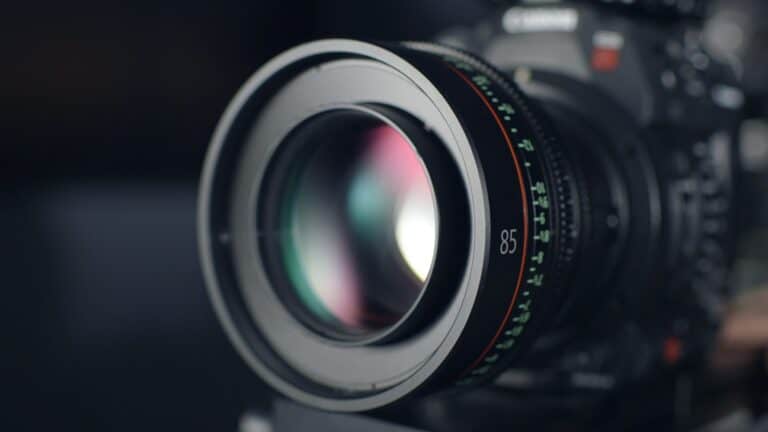Why You Should Use Auditory Training In Your Clinic
Originally published in audiologypractices.org
Author: Sandra Vandenhoff, Au.D.
I almost quit Audiology, once. Here is my story.
I was so frustrated after 11 years in a busy private practice clinic that I applied for a management job at the SPCA. When they offered the job to me, I seriously considered accepting it. Every day I would have to select which dogs to euthanize. What was I thinking?
I clearly needed a way out. Admittedly, part of my frustration had to do with my own severe to profound hearing loss. With two hearing aids, my ability to understand speech was 16% in quiet. Communication was full of effort. More than that, however, I had lost hope and excitement about Audiology.
I saw some of the same things in my patients, who were primarily older adults. Hearing aid technology was continually improving. Despite that fact, so few people were truly delighted with their hearing aids.
I shared with my patients what I knew about success with hearing aids: Invest in the best technology that you can afford. Get two hearing aids, and wear them consistently. I also offered lipreading classes to interested patients.
Even if they did all those things (and many of them didn’t), I still saw a look in their eyes that I recognized: “Is this all there is?” Whenever they said, “I still can’t hear in noise,” that’s what they were thinking. That feeling, of “Is this all there is?” was the bane of my existence. I couldn’t dismiss it, because I felt it too.
Then, in 2006, two really important things happened to me. I got a cochlear implant (CI). And I fell in love with Audiology again.
I got my CI on a Friday, and I immediately launched a do-it-yourself auditory training program. Over the next three days, I spent 1015 hours immersed in auditory training, with the biggest smile on my face the whole time.
Off skiing that weekend, my husband arrived home and said, “Who are you, and what have you done with my wife?” Not only could I hear much better after three days, but my eyes were shining. I was so happy. CI technology was part of it. But if I had sat there and waited for the results with my CI to get better, my eyes would not have been shining.
Almost overnight, my outlook had changed. Now, I had something I could work with. Now, I could improve my own plight. I became part of my own solution. I gained back the control that had been taken from me. I realized that, through my own efforts, my life could change. It’s the very definition of life with hope. You put in the effort, and things get better. Through your own efforts, your life can change.
This realization changed my hearing and listening skills. Improving your hearing can certainly change your life. But then the effects spread outwards and changed how I approach my health, my relationships, and my spiritual life. This principle became the cornerstone of my business, HEARa, which focuses on aural rehab and education for older adults.
Who knew that spending a weekend in front of a boom box could have such a ripple effect? The thought that you can improve hearing and listening skills is empowering. Empowering people is important. Dr. Sam Trychin, a psychologist with hearing loss, notes that people with hearing loss are at risk for feeling a loss of influence or control (Trychin, 2003). This can lead to a passive outlook.
A passive outlook can then lead to a lack of staying power—and giving up too soon with hearing aids. Most people with hearing loss are not afraid of effort, in my opinion. It’s just that they don’t know exactly where to put their effort. They are afraid that the effort won’t yield any results.
That’s why patients expect you, the professional, to take on all the responsibility for success. Everything rests on your expertise and the performance of the hearing aids. They place all the confidence in you, because they don’t have the confidence in themselves.
If we don’t dispel these ideas, unrealistic expectations of hearing aids become inevitable. This is where LACE comes in. Coincidentally, 2006 was the year that LACE was released. LACE, an acronym for Listening and Communication Enhancement, was developed by two audiologists—Dr. Robert Sweetow and Jennifer Henderson Sabes. LACE is a computer-based auditory training program.
To learn more about how LACE can help you manage your patients’ expectations see this YouTube video:
An important takeaway from this video is that by incorporating LACE training into your practice, you are telling your patients, “You have a job to do, it’s important, and it works.” Your patients’ attitudes will shift to one of shared responsibility.
LACE is an auditory training program designed specifically for older adults with hearing loss. Other auditory training programs are available for people with hearing loss, but LACE is the only one that was specifically designed for older adults.
Even with normal hearing, older adults require a 35 dB higher SNR than younger listeners (Schneider, et al. 2005). So there is something beyond hearing loss that makes it harder for older adults to hear in noise. That something is: our brain, and how it changes as we age.
To learn more about LACE and the aging process see this YouTube video:
An important takeaway from the video is to recognize that so many things are changing in the brain as we age: processing speed, working memory, hearing in noise, but also: multitasking. As we get older, multitasking gets harder. Every time we’re interrupted or distracted, it’s harder to go back to what we were doing before. Hearing loss is an exercise in multitasking, 24/7.
At a noisy restaurant with family members, people with hearing loss have to:
- fill in the gaps created by hearing loss
- hold onto parts of the conversation in working memory while searching for a word or phrase that makes sense
- lip-read
- shift attention from one person to another in conversation
- localize in order to use visual cues and then, you can actually get around to thinking.
By this time, thinking can be the straw that breaks the camel’s back—and lead to system overload. Instead of thinking about the conversation, we have thoughts such as, “What’s he saying? I can’t hear well when I am tired. Should I ask him to repeat that again, or pretend I heard?” A feeling of panic takes over and comprehension plummets even further.
Hearing aids help to fill in the gaps created by hearing loss. Brain training with LACE scaffolds comprehension by improving processing speed, working memory, and the ability to shift attention between speakers. LACE also works on strengthening prediction skills and the use of context.
But one of the most valuable aspects of LACE training, in my opinion, is the effect on the thinking process itself. LACE reinforces the idea that we don’t have to hear every word to understand the message. We learn to keep trying. We learn to keep paying attention, because even though we missed the first part, we may catch the rest later.
This self-knowledge can be a tremendous confidence booster. Many older adults wait years to get hearing aids, and in the meantime, lose confidence in their ability to communicate. When you feel hesitant and unsure, you’re more likely to hang back than join in. Many people with hearing loss would rather stay at home than feel invisible at a party and pretend to hear jokes. They don’t seek out new connections and enter ongoing conversations.
I think this is the most painful aspect of having hearing loss—your world becomes smaller and smaller.
But…
There’s a constant launch of new ideas, products, and services in our profession. We all have to be on the lookout for the next big thing. How do I know that this is worth my time?
Consider the patient who comes in with high SNR loss. You partly solve their problem with directional microphones, to the tune of 48 dB SNR improvement, in many environments (Christensen, 2011).
Is this all there is? Is this as good as it gets? With LACE, our answer is, “No. We can do better.” With LACE, the average QuickSIN improvement* is an additional 4.5 dB (Song, et al, 2011 a). In general, the poorer the performance you see initially on speech in noise perception, the greater the improvement you can expect.
It’s not just a placebo effect. Song, et al, 2011 b, showed that the brain actually changes how it encodes pitch cues. After LACE training, there is an enhancement in the transition between consonant and vowel sounds.
Better speech in noise perception is directly linked to the enhanced encoding of pitch cues in this transition period. Better yet, these changes last. Six months later, the improvement in speech in noise perception is retained (Song, et al, 2011 c).
In addition, return for credit rates drop significantly when LACE training is implemented. Martin (2007) found that consumers who participated in LACE training were four times less likely to return their hearing aids. Taylor and Shrive (2008) reported that the average return for credit rate for three clinics went from 15% to 3% after implementing LACE training, representing $150,000 in retained revenue for three clinics over a one-year period.
You may be wondering at this point: If LACE is so great, why aren’t more people using it? To be honest, I keep asking myself the same question. Sometimes it just takes time for new ideas to catch on—even the really great ones. I am hoping that auditory training and LACE won’t take as long to catch on as Copernicus and Galileo’s ideas that the sun, not the earth, is the center of our solar system!
Here’s what I think happened. In some early attempts by hearing care professionals to implement LACE, they made a critical mistake: they handed a LACE CD to their patients and said, “Good luck!” Success rates were low.
We don’t do that with hearing aids. We don’t hand a pair of hearing aids to a patient and say, “I think this will work really well for you. Go for it!” That’s essentially what happened in the beginning. We now know that patients need support to get to the finish line. LACE training is challenging and adaptive. The adaptive part means that it never gets easy. As performance improves, the tasks get more demanding.
A study by Sweetow & Sabes (2010) of 3,000 LACE users found that 70% didn’t finish all 20 sessions to complete the training.1 Fortunately, it is a short-term effort. The 20 sessions are ideally completed over a one-month period. Clinics that have successfully implemented LACE corrected the crucial mistake. They keep in regular contact with the patient throughout the training period and give detailed feedback about progress.
Imagine that you just had knee surgery and you were told to see a physical therapist to maximize your recovery. The physical therapist gives you exercises that take 20 minutes to complete, every other day. She hands you the sheet of exercises, and then she says, “These exercises will really help you—they’ll strengthen the muscles around your knee.”
Would you do the exercises? Dr. Sweetow’s research suggests that 70% of your patients won’t. What if instead, your physical therapist said, “I’m going to keep an eye on your progress. I’ll be checking your scores on a regular basis.” Sure enough, about a week later, you get an email from her saying, “Your strength has really improved! You are 3% above where I expected you to be. Excellent work. Keep going!” Would you be more likely to continue? Probably. And your patients probably would too.
When should I start talking with patients about LACE?
I suggest incorporating LACE into the very beginning of your interaction with your patients. Consider sending information about LACE to the patient before they come into the clinic for the appointment.
Don’t forget your waiting room. Brochures and other literature on the importance of LACE, and the second YouTube video, “LACE Auditory Training: a key to hearing better is noise” (which is captioned), can be displayed in the waiting room.
While counseling, you can discuss the effects of hearing loss and aging on communication. Speech in noise test results provides a natural opening for this part of the conversation. For the effects of hearing loss on hearing in noise, you recommend hearing aids. For the effects of aging on hearing in noise, you can recommend LACE.
Auditory training as an alternative revenue stream
By Brian Taylor, AP Editor
Auditory training exercises, like the ones described by Dr. Vandenhoff have been shown in the literature to improve aided benefit, speech understanding in noise and significantly reduce returns for credit in your clinic.
Auditory training exercises could be prescribed for patients presenting to your clinic with a minimal hearing loss who nevertheless describe persistent communication problems in everyday listening situations. Although to my knowledge there is no published data available on the efficacy of auditory training specific to a group of patients with minimal hearing loss that are not wearing hearing aids, it’s logical to expect this subgroup of patients to reap similar benefits compared to hearing aid users who have completed LACE training.. Patients with normal hearing or minimal hearing loss that have a documented hearing handicap could be prescribed a series of auditory training exercises like the ones outlined in this article. These patients could be billed for the auditory training exercises and improvements in hearing handicap could be documented following the completion of the auditory training program. Clinics that offer this service charge approximately $100 to $200 for the program. Documentation of hearing handicap pre and post-training could be completed with a tool like the Hearing Handicap Inventory for Adults.
Which patients are candidates for LACE training?
- Patients who have waited years to get hearing aids
- Patients who are hesitant but willing to try hearing aids again
- Patients with a high SNR loss
- Patients who are at risk for returning hearing aids
- Patients with unrealistic expectations
- Patients who keep coming back for adjustments
- Existing hearing aid users who are dissatisfied with hearing in noise
- Patients who give you the look: “Is this all there is?”
- Patients who are not ready for hearing aids yet but are willing to take smaller steps to improve hearing, listening, and communication skills.
I suggest starting with patients who are comfortable using a computer and have Internet access.
Patients should have a grade eight reading level in English. Patients for whom English is a second language have more difficulty with English speech recognition than native English speakers (Rogers et al, 2006). As long as the reading level is sufficient, these patients would benefit from LACE training as well.
How much time does LACE training take?
After the initial setup procedures, anticipate one to two hours of coaching per patient to support them through the program. Parts of the process can be automated, such as email alerts when the patient has stopped training and progress report templates. Not all of the work needs to be done by the hearing care professional. Some clinics outsource the LACE training entirely.
Your patient will spend 20 minutes per day for 20 sessions. Ideally, they will do five sessions per week for four weeks. They can take the other two days off per week to suit their schedule.
A complete equation
I am grateful that I didn’t give up on Audiology, a profession that I truly have a passion for. I’m also grateful for having found the missing piece to resolve my frustration for all of those years.
Auditory training not only completes the equation:
Your expertise + Hearing Aids + Auditory training = Success
It also empowers your patients by being part of the equation too. Not only will you have a patient who’s listening, hearing, and communication skills have improved, you will have a client who will reopen closed doors because they know “Through my own efforts, my life can change.”
Sandra Vandenhoff, Au.D. is an audiologist with hearing loss and founder of HEARa (Hearing Education and Rehabilitation for Adults). She can be reached at Sandra@heara.ca.
References
Trychin, S. (2003). Why Don’t They Do What They Should? (Paper presented at the Second International Adult Aural Rehabilitation Conference, Portland, ME). Retrieved April 16, 2012 from http://www.trychin.com/whydontthey.html
Schneider, B.A., Daneman, M., Murphy, D. (2005). Speech comprehension difficulties in older adults: cognitive slowing or agerelated changes in hearing? Psychology and Aging, 20: 261271.
Christensen, L.A., (2011). Directionality in Hearing Aids: A Progress Report. Retrieved April 16, 2012 from http://www.hearingreview.com/issues/articles/HPR_201109_01.asp
Song. J.H., Skoe, E., Banai, K., Kraus, N. (2011a). Training to Improve Hearing Speech in Noise: Biological Mechanisms. Cerebral Cortex, doi: 10.1093/cercor/bhr196
Song, J.H., Skoe. E., Banai, K., Kraus, N. (2011b). Perception of Speech in Noise: Neural Correlates. Journal of Cognitive Neuroscience, 23:9, 22682279.
Song. J.H., Skoe, E., Banai, K., Kraus, N. (2011c). Training to Improve Hearing Speech in Noise: Biological Mechanisms. Cerebral Cortex, doi: 10.1093/cercor/bhr196
Martin, M. (2007). Software-based auditory training programs found to reduce hearing aid return rate. The Hearing Journal. 60, 8.
Taylor, B., Shrive, A. (2008). The economics of computer-based auditory training. AudiologyOnline. Web publication. Direct URL: http://www.audiologyonline.com/articles/pf_article_detail.asp?article_id=2060. Retrieved November 14, 2011 from eLearning on www.audiologyonline.com.
Sweetow, R.W., Henderson Sabes, J. (2010). Auditory Training and Challenges Associated with Participation and Compliance. Journal of the American Academy of Audiology, 21: 586593.







